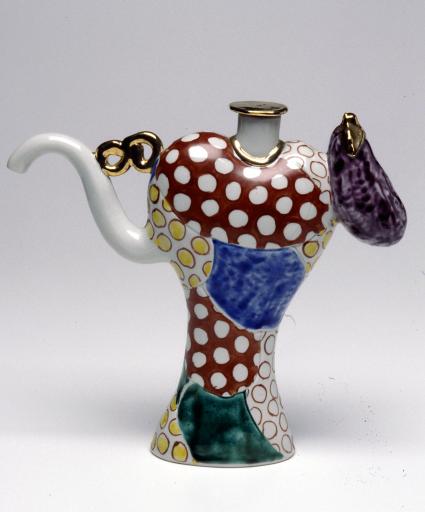Tea Pot with Eggplant, Matsuda Yuriko
Artwork Overview
Matsuda Yuriko, artist
born 1943
Tea Pot with Eggplant,
1992
Where object was made: Japan
Material/technique: polychromy; porcelain
Dimensions:
Object Height/Width/Depth (Height x Width x Depth): 25.7 x 29 x 6.5 cm
Object Height/Width/Depth (Height x Width x Depth): 10 1/8 x 11 7/16 x 2 9/16 in
Object Height/Width/Depth (Height x Width x Depth): 25.7 x 29 x 6.5 cm
Object Height/Width/Depth (Height x Width x Depth): 10 1/8 x 11 7/16 x 2 9/16 in
Credit line: Musuem purchase: R. Charles and Mary Margaret Clevenger Fund
Accession number: 2002.0002.a,b
Not on display
If you wish to reproduce this image, please submit an image request


